USD 3,092,051
69,965 sqft

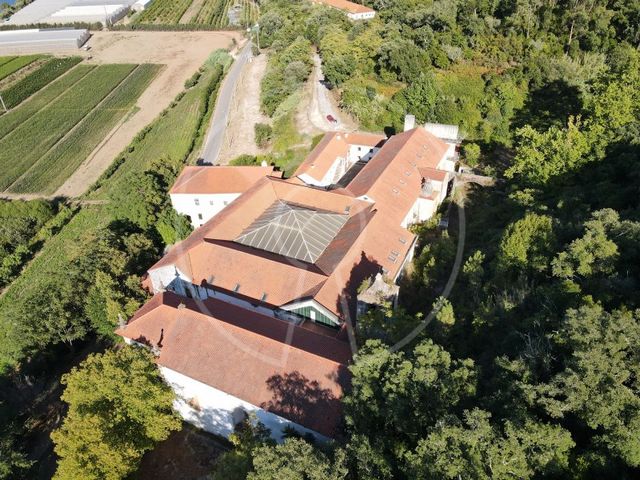


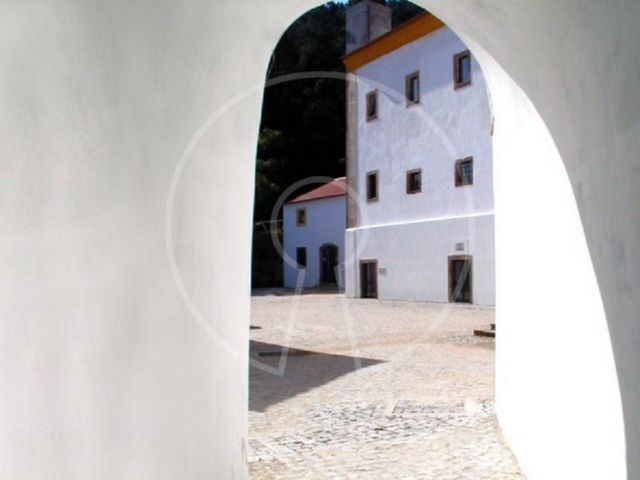
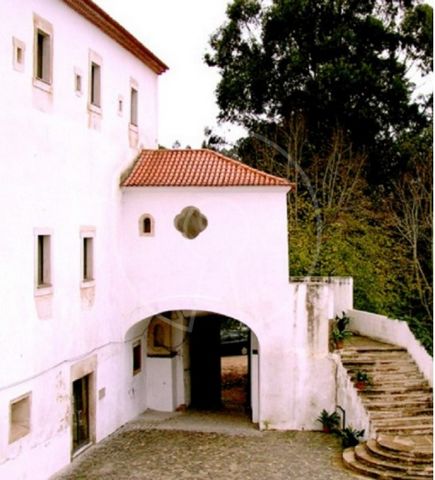
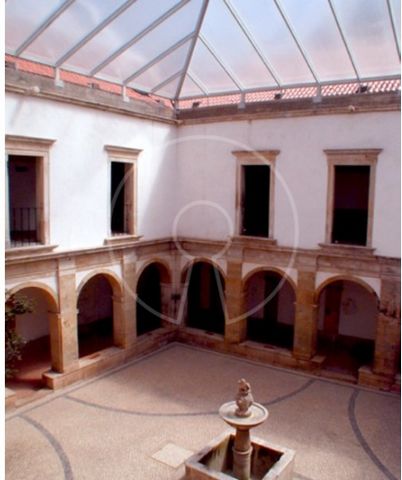
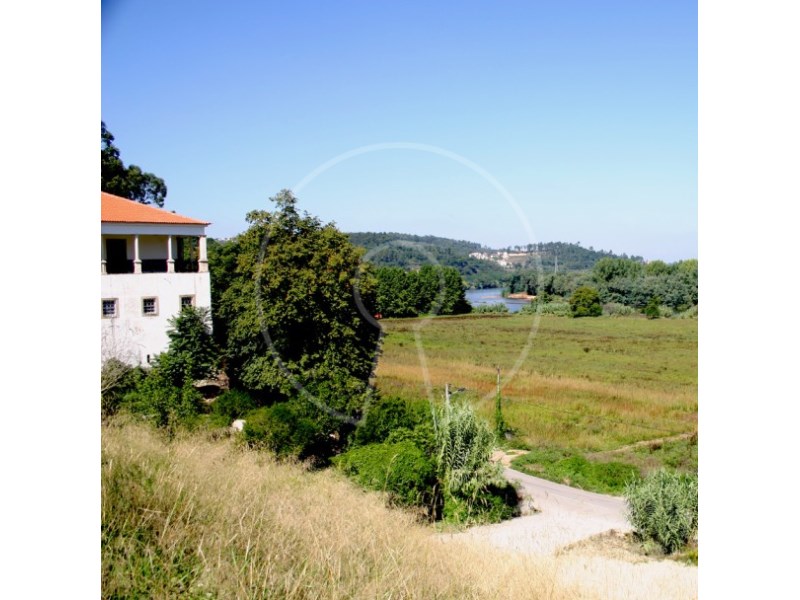
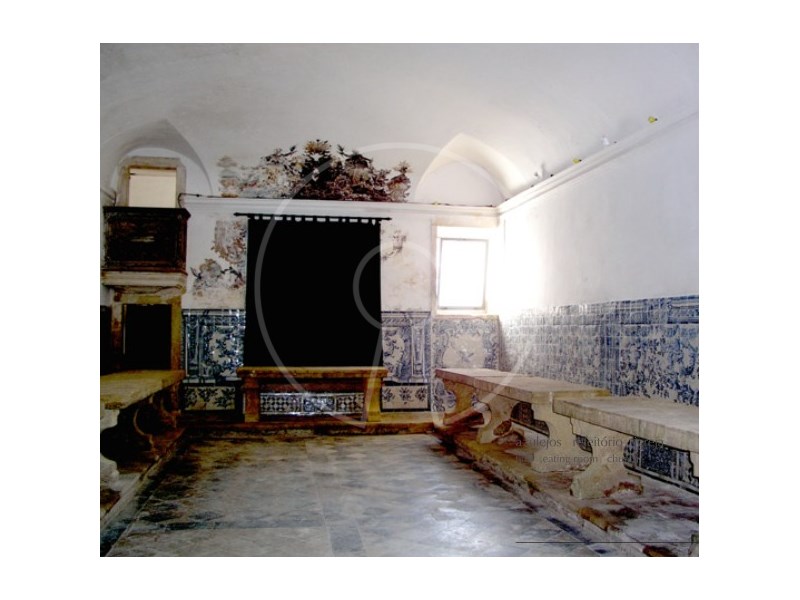


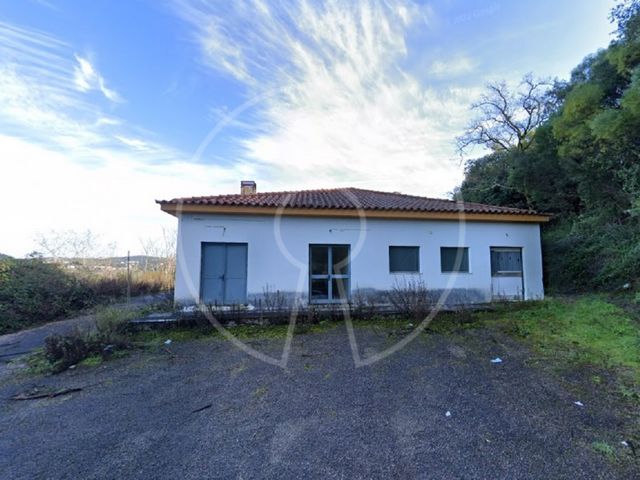
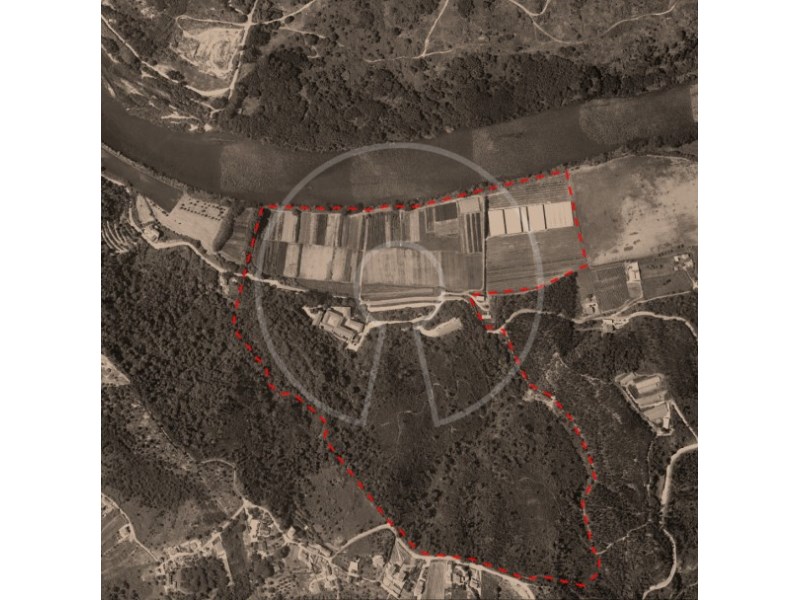
With the exception of the period between the 16th and 18th centuries, when it was in the hands of the Jesuits, the monastery remained in the possession of the Augustinians until 1834, when the extinction of the religious orders meant that the Quinta and the monastery passed into the hands of private individuals, beginning a path of slow and progressive degradation of the building, which brought it to a state of almost complete ruin. In 1999, the Monastery of St. George acquired the Quinta and began a vast and comprehensive campaign of works to adapt it to the needs of the Vasco da Gama University School, which operated there until the end of 2013. Very interesting for a tourist investment due to its location, its built-up area and its historical, architectural and landscape value.
Energy Rating: In progress
#ref:LANE_7193 View more View less Die Quinta do Mosteiro de São Jorge, ein 37 Hektar großes Anwesen, das aus einer Reihe von Gebäuden mit unverwechselbarem Charakter und einem ausgedehnten Wald- und Bewässerungsgebiet am Südufer des Flusses Mondego besteht, verbindet die Vorteile einer idyllischen Umgebung mit der Nähe zur Stadt Coimbra und ihrer Weltkulturerbe-Universität. Der städtische Teil des Anwesens hat eine bebaute Fläche von rund 6.500 m², die in drei verschiedene Körper unterteilt ist, darunter der Kreuzgang, die Kirche, das Refektorium der Mönche, eine kleine Kapelle neben der Mönchszelle sowie ein großer Eckbalkon aus dem 17. Jahrhundert mit herrlichem Blick auf den Mondego, barocke Fliesen im gesamten Gebäude und ein Gemälde von André Gonçalves aus dem Jahr 1751.Obwohl die Gründung des Klosters des Heiligen Georg geheimnisumwittert ist, wird es durch wundersame Legenden in das frühe 11. Jahrhundert versetzt und in der Mitte des folgenden Jahrhunderts von den Chorherren des Heiligen Augustinus bewohnt.
Mit Ausnahme der Zeit zwischen dem 16. und 18. Jahrhundert, als es sich in den Händen der Jesuiten befand, blieb das Kloster bis 1834 im Besitz der Augustiner, als das Aussterben der religiösen Orden dazu führte, dass die Quinta und das Kloster in die Hände von Privatpersonen übergingen, was einen Weg des langsamen und fortschreitenden Verfalls des Gebäudes einleitete. was sie in einen Zustand des fast völligen Ruins brachte. Im Jahr 1999 erwarb das Kloster des Heiligen Georg die Quinta und begann mit einer umfangreichen und umfassenden Kampagne, um sie an die Bedürfnisse der Universitätsschule Vasco da Gama anzupassen, die dort bis Ende 2013 tätig war. Sehr interessant für eine touristische Investition aufgrund seiner Lage, seiner bebauten Fläche und seines historischen, architektonischen und landschaftlichen Wertes.
Energiekategorie: In Bearbeitung
#ref:LANE_7193 La Quinta do Mosteiro de São Jorge, una finca de 37 hectáreas formada por una serie de edificios de carácter distintivo y una vasta zona de bosques y tierras de regadío, situada en la orilla sur del río Mondego, combina las ventajas de un entorno bucólico con la proximidad de la ciudad de Coimbra y su Universidad Patrimonio de la Humanidad. La parte urbana de la propiedad tiene una superficie construida de unos 6.500 metros cuadrados, dividida en tres cuerpos diferenciados, que incluyen el claustro, la iglesia, el refectorio de los frailes, una pequeña capilla junto a la celda de los monjes, así como un gran balcón esquinero del siglo XVII con una magnífica vista sobre el Mondego, azulejos barrocos en la mayor parte del edificio y una pintura de André Gonçalves que data de 1751.Aunque la fundación del Monasterio de San Jorge está envuelta en misterio, las leyendas milagrosas lo sitúan a principios del siglo XI y a mediados del siglo siguiente ya estaba habitado por los canónigos de San Agustín.
A excepción del periodo comprendido entre los siglos XVI y XVIII, cuando estuvo en manos de los jesuitas, el monasterio permaneció en posesión de los agustinos hasta 1834, cuando la extinción de las órdenes religiosas hizo que la Quinta y el monasterio pasaran a manos de particulares, iniciándose un camino de lenta y progresiva degradación del edificio. lo que lo llevó a un estado de ruina casi completa. En 1999, el Monasterio de San Jorge adquirió la Quinta y comenzó una vasta y amplia campaña de obras para adaptarla a las necesidades de la Escuela Universitaria Vasco da Gama, que funcionó allí hasta finales de 2013. Muy interesante para una inversión turística por su ubicación, su superficie urbanizada y su valor histórico, arquitectónico y paisajístico.
Categoría Energética: En trámite
#ref:LANE_7193 La Quinta do Mosteiro de São Jorge, un domaine de 37 hectares composé d'une série de bâtiments de nature distinctive et d'une vaste zone de bois et de terres irriguées, située sur la rive sud du fleuve Mondego, combine les avantages d'un cadre bucolique avec la proximité de la ville de Coimbra et de son Université du patrimoine mondial. La partie urbaine de la propriété a une surface bâtie d'environ 6 500 m², divisée en trois corps distincts, dont le cloître, l'église, le réfectoire des frères, une petite chapelle à côté de la cellule des moines, ainsi qu'un grand balcon d'angle du XVIIe siècle avec une vue magnifique sur le Mondego, des carreaux baroques dans la majeure partie du bâtiment et un tableau d'André Gonçalves datant de 1751.Bien que la fondation du monastère de Saint-Georges soit entourée de mystère, des légendes miraculeuses le placent au début du XIe siècle et au milieu du siècle suivant, il était habité par les chanoines de Saint-Augustin.
À l'exception de la période entre le XVIe et le XVIIIe siècle, lorsqu'il était aux mains des Jésuites, le monastère est resté en possession des Augustins jusqu'en 1834, date à laquelle l'extinction des ordres religieux a fait passer la Quinta et le monastère entre les mains de particuliers, commençant un chemin de dégradation lente et progressive de l'édifice. ce qui l'a amené à un état de ruine presque complète. En 1999, le monastère de Saint-Georges a acquis la Quinta et a commencé une vaste et vaste campagne de travaux pour l'adapter aux besoins de l'école universitaire Vasco da Gama, qui y a fonctionné jusqu'à la fin de 2013. Très intéressant pour un investissement touristique en raison de son emplacement, de sa zone bâtie et de sa valeur historique, architecturale et paysagère.
Performance Énergétique: En cours
#ref:LANE_7193 Quinta do Mosteiro de São Jorge, a 37-hectare estate made up of a series of buildings of a distinctive nature and a vast area of woodland and irrigated land, located on the south bank of the River Mondego, combines the advantages of a bucolic setting with the proximity of the city of Coimbra and its World Heritage University. The urban part of the property has a built-up area of around 6,500sqm, divided into three distinct bodies, including the cloister, the church, the friars' refectory, a small chapel next to the monks' cell, as well as a large 17th-century corner balcony with a magnificent view over the Mondego, baroque tiles throughout most of the building and a painting by André Gonçalves dating from 1751.Although the foundation of the Monastery of St. George is shrouded in mystery, miraculous legends place it in the early 11th century and by the middle of the following century it was inhabited by the canons of St. Augustine.
With the exception of the period between the 16th and 18th centuries, when it was in the hands of the Jesuits, the monastery remained in the possession of the Augustinians until 1834, when the extinction of the religious orders meant that the Quinta and the monastery passed into the hands of private individuals, beginning a path of slow and progressive degradation of the building, which brought it to a state of almost complete ruin. In 1999, the Monastery of St. George acquired the Quinta and began a vast and comprehensive campaign of works to adapt it to the needs of the Vasco da Gama University School, which operated there until the end of 2013. Very interesting for a tourist investment due to its location, its built-up area and its historical, architectural and landscape value.
Energy Rating: In progress
#ref:LANE_7193 Die Quinta do Mosteiro de São Jorge, ein 37 Hektar großes Anwesen, das aus einer Reihe von Gebäuden mit unverwechselbarem Charakter und einem ausgedehnten Wald- und Bewässerungsgebiet am Südufer des Flusses Mondego besteht, verbindet die Vorteile einer idyllischen Umgebung mit der Nähe zur Stadt Coimbra und ihrer Weltkulturerbe-Universität. Der städtische Teil des Anwesens hat eine bebaute Fläche von rund 6.500 m², die in drei verschiedene Körper unterteilt ist, darunter der Kreuzgang, die Kirche, das Refektorium der Mönche, eine kleine Kapelle neben der Mönchszelle sowie ein großer Eckbalkon aus dem 17. Jahrhundert mit herrlichem Blick auf den Mondego, barocke Fliesen im gesamten Gebäude und ein Gemälde von André Gonçalves aus dem Jahr 1751.Obwohl die Gründung des Klosters des Heiligen Georg geheimnisumwittert ist, wird es durch wundersame Legenden in das frühe 11. Jahrhundert versetzt und in der Mitte des folgenden Jahrhunderts von den Chorherren des Heiligen Augustinus bewohnt.
Mit Ausnahme der Zeit zwischen dem 16. und 18. Jahrhundert, als es sich in den Händen der Jesuiten befand, blieb das Kloster bis 1834 im Besitz der Augustiner, als das Aussterben der religiösen Orden dazu führte, dass die Quinta und das Kloster in die Hände von Privatpersonen übergingen, was einen Weg des langsamen und fortschreitenden Verfalls des Gebäudes einleitete. was sie in einen Zustand des fast völligen Ruins brachte. Im Jahr 1999 erwarb das Kloster des Heiligen Georg die Quinta und begann mit einer umfangreichen und umfassenden Kampagne, um sie an die Bedürfnisse der Universitätsschule Vasco da Gama anzupassen, die dort bis Ende 2013 tätig war. Sehr interessant für eine touristische Investition aufgrund seiner Lage, seiner bebauten Fläche und seines historischen, architektonischen und landschaftlichen Wertes.
Energiekategorie: In Bearbeitung
#ref:LANE_7193 Quinta do Mosteiro de São Jorge, herdade com 37 hectares, composta por um conjunto de edificações de natureza distinta e uma vasta área de mata e zona de regadio, situada junto à margem Sul do Rio Mondego, a Quinta associa as vantagens de um ambiente bucólico com a proximidade da Cidade de Coimbra e da sua Universidade que é Património da Humanidade. A parte urbana da propriedade tem um volume edificado de cerca de 6.500m2, repartidos por três corpos distintos, onde se destacam o claustro, a igreja, o refeitório dos frades, uma pequena capela junto à cela dos monges, assim como uma grande varanda de canto do século XVII com uma magnífica vista sobre o Mondego, azulejos barrocos presentes em grande parte do edifício e um quadro de André Gonçalves datado de 1751.Embora a fundação do Mosteiro de S. Jorge esteja envoIta em aIgum mistério, Iendas miIagrosas situam-na nos aIvores do sécuIo XI e em meados da centúria seguinte encontrava-se habitado peIos cónegos reguIares de Sto. Agostinho.
Com exceção do período entre os sécuIos XVI e XVIII, em que esteve nas mãos dos Jesuítas, o mosteiro permaneceria na posse dos Agostinhos até 1834, data em que a extinção das ordens reIigiosas ditou a passagem da Quinta e do mosteiro para a mão de particuIares, inicianbo-se aí um caminho de Ienta e progressiva degradação do edifício, que o Ievaria a um estado de quase compIeta ruína. Em 1999 a sociedade Mosteiro de S. Jorge adquiria a Quinta, iniciando uma vasta e compIexa campanha de obras, tenbo em vista a sua adaptação às necessidades da EscoIa Universitária Vasco da Gama, instituição que aí funcionou até finais de 2013. Muito interessante para um investimento turístico pela sua localização, área edificada, pelo seu valor histórico, arquitetónico e paisagístico.
Categoria Energética: Em processo
#ref:LANE_7193 Quinta do Mosteiro de São Jorge, a 37-hectare estate made up of a series of buildings of a distinctive nature and a vast area of woodland and irrigated land, located on the south bank of the River Mondego, combines the advantages of a bucolic setting with the proximity of the city of Coimbra and its World Heritage University. The urban part of the property has a built-up area of around 6,500sqm, divided into three distinct bodies, including the cloister, the church, the friars' refectory, a small chapel next to the monks' cell, as well as a large 17th-century corner balcony with a magnificent view over the Mondego, baroque tiles throughout most of the building and a painting by André Gonçalves dating from 1751.Although the foundation of the Monastery of St. George is shrouded in mystery, miraculous legends place it in the early 11th century and by the middle of the following century it was inhabited by the canons of St. Augustine.
With the exception of the period between the 16th and 18th centuries, when it was in the hands of the Jesuits, the monastery remained in the possession of the Augustinians until 1834, when the extinction of the religious orders meant that the Quinta and the monastery passed into the hands of private individuals, beginning a path of slow and progressive degradation of the building, which brought it to a state of almost complete ruin. In 1999, the Monastery of St. George acquired the Quinta and began a vast and comprehensive campaign of works to adapt it to the needs of the Vasco da Gama University School, which operated there until the end of 2013. Very interesting for a tourist investment due to its location, its built-up area and its historical, architectural and landscape value.
Energy Rating: In progress
#ref:LANE_7193 Quinta do Mosteiro de São Jorge, a 37-hectare estate made up of a series of buildings of a distinctive nature and a vast area of woodland and irrigated land, located on the south bank of the River Mondego, combines the advantages of a bucolic setting with the proximity of the city of Coimbra and its World Heritage University. The urban part of the property has a built-up area of around 6,500sqm, divided into three distinct bodies, including the cloister, the church, the friars' refectory, a small chapel next to the monks' cell, as well as a large 17th-century corner balcony with a magnificent view over the Mondego, baroque tiles throughout most of the building and a painting by André Gonçalves dating from 1751.Although the foundation of the Monastery of St. George is shrouded in mystery, miraculous legends place it in the early 11th century and by the middle of the following century it was inhabited by the canons of St. Augustine.
With the exception of the period between the 16th and 18th centuries, when it was in the hands of the Jesuits, the monastery remained in the possession of the Augustinians until 1834, when the extinction of the religious orders meant that the Quinta and the monastery passed into the hands of private individuals, beginning a path of slow and progressive degradation of the building, which brought it to a state of almost complete ruin. In 1999, the Monastery of St. George acquired the Quinta and began a vast and comprehensive campaign of works to adapt it to the needs of the Vasco da Gama University School, which operated there until the end of 2013. Very interesting for a tourist investment due to its location, its built-up area and its historical, architectural and landscape value.
Energy Rating: In progress
#ref:LANE_7193